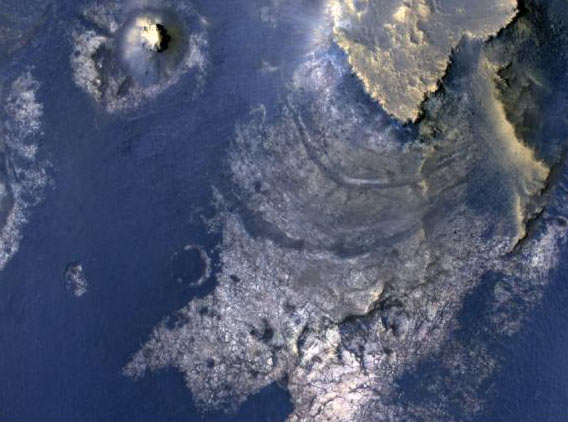Create a free profile to get unlimited access to exclusive videos, sweepstakes, and more!
Was McLaughlin Crater on Mars Once Actually LAKE McLaughlin?

A long time agoâa billion years or so, when life on Earth was just getting a multicellular pseudopod-hold in its oceansâMars may have looked very similar. Although cold and dry and dead now, back then Mars was warmer, had a thicker atmosphere, and thereâs copious evidence that it had water on its surface. But the nature of that water is still a mystery. Looking at Mars now, there is tantalizing evidence of what were once large oceans, lakes, and rivers eons ago. Some places on the planet look like they suffered catastrophic temporary floods of water, but others may have had long-lived bodies of water.
Thereâs evidence of lakes, too, fed by rivers. But now planetary scientists have announced something new and potentially exciting: McLaughlin crater, an impact crater about 100 kilometers (60 miles) across, may have once been a standing lake fed by groundwater. If true, this makes the potential for life having once existed on the planet even better.
The evidence is from the Mars Reconnaissance Orbiter (MRO), which has been orbiting and photographing the red planet since 2006. I usually talk about MROâs phenomenal HiRES camera that takes spectacular images of the surface (and which did take the color-enhanced images seen here), but in this case the data came from the Compact Reconnaissance Imaging Spectrometer for Mars (CRISM). This instrument breaks up light into hundreds of individual colors, which, when analyzed, can reveal the composition of the object observed.
When they looked at the floor of McLaughlin crater using CRISM, scientists found the signature of clay and carbonates, minerals created when thereâs lots of water handy. The mineral layers can be seen in the color-enhanced photo above as the arcs of material below the wedge-shaped feature on the right. The image covers an area roughly 500 meters (0.3 miles) across, and the fan-shaped deposits are about 200 meters across. Thereâs a lot of sedimentary rock there, implying the water was around for a while.
Clays and carbonates like this have been seen before, but what makes this special is the crater itself: Itâs very deep (2.2 kilometers or 1.4 miles) which means it could retain water inside it. Also, there are no obvious large cracks or openings in the crater rim, which means water probably didnât flow in from outside; whatever water was in the crater lake originated from under the surface. Interestingly, they also found gullies in the rim that stop at the same level, as if created by water pouring in from the crater walls and flowing in to a lake (which would have naturally stopped at the lakeâs surface around the rim).
This excites me personally because if it pans out, it means there was standing water on the surface long enough to create and deposit those minerals. We donât know if life ever arose on Mars, or even if it ever got the chance. But a place where organic chemicals were around, and where they couldâve settled and mixed together over long periods of timeâ¦well, thatâs very interesting indeed.
McLaughlin crater looks like a good candidate for a future mission (in fact, MRO took images of the region for just that reason). Itâs not precisely clear how you can test for the presence of eons-dead life (microscope photos might help, but how can you be sure what youâve seen is from Martian critters? Though Iâll note that if they look diatoms there may be contamination issues). But it strikes me as an excellent place to determine the history of water on Mars; as much so as Gale crater, which is the location where Curiosity rover is exploring.
Either way, what this is telling us is that the history of Mars, both geologically and hydrologically at least, are more complex, more entangled, and more interesting than we had initially thought.
And isn't that why we explore space in the first place?


























